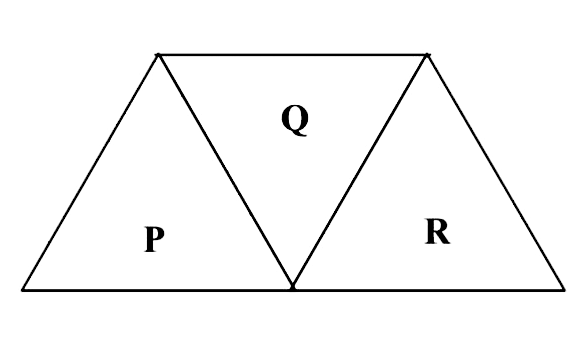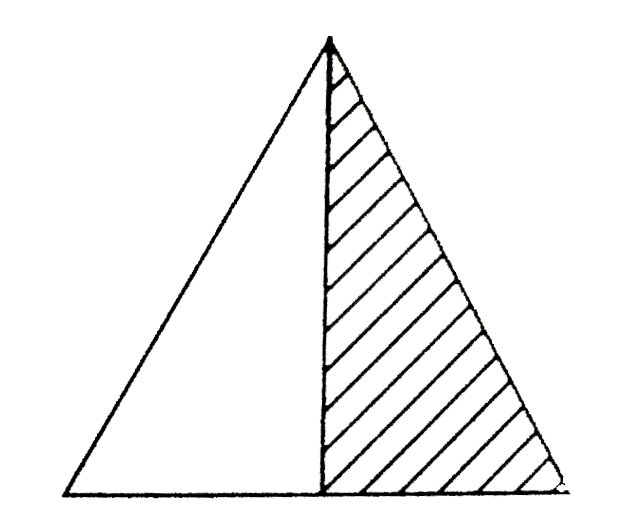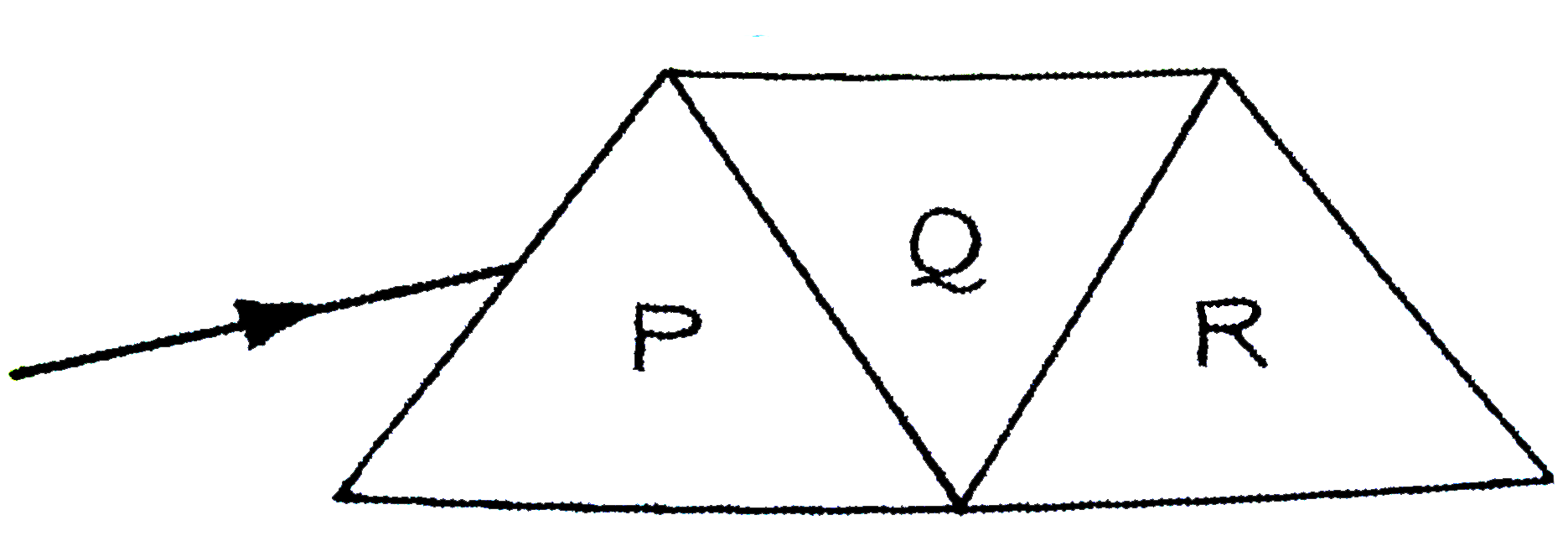A given ray of light suffers minimum deviation in an equilateral prism P. Additional prisms Q and R of identical shape and of same material as P are now added as shown in figure. The ray will now suffer

no deviation
greater deviation
same deviation as before
total internal reflection
The correct Answer is:C
same deviation as before
Topper's Solved these Questions
- MISCELLANEOUS QUESTIONSBOOK - MCGROW HILL PUBLICATIONCHAPTER - MISCELLANEOUS QUESTIONSEXERCISE - PART-B
99 Videos
- MEASUREMENTBOOK - MCGROW HILL PUBLICATIONCHAPTER - MEASUREMENTEXERCISE - ELEMENTARY QUESTIONS (HIGHER ORDER THINKING QUESTIONS)
13 Videos
- MOTIONBOOK - MCGROW HILL PUBLICATIONCHAPTER - MOTIONEXERCISE - HIGHER ORDER THINKING QUESTIONS
48 Videos
Similar Questions
A car moving with a speed of 30 ms−1 takes a U-turn in 6 seconds, without changing its speed. What is the average acceleration during these 6 seconds?
View SolutionThe ratio of one micron to one nanometre is
View SolutionThe location of a particle has changed. What can you say about the displacement and the distance covered by the particle?
View SolutionA given ray of light suffers minimum deviation in an equilateral prism P. Additional prism Q and R of identical shape and of the same material as P are now added as shown in the figure. The ray will now suffer

View SolutionA given ray of light suffers minimum deviation in an equilateral prism P. Additional prism Q and R of identical shape and of the same material as P are now added as shown in figure. The ray will now suffer
View SolutionThe angle of incidence for a ray of light at a refracting surface of a prism is 45∘. The angle of prism is 60∘. If the ray suffers minimum deviation through the prism, the angle of minimum deviation and refractive index of the material of the prism respectively, are :
View SolutionA light ray is incident on a prism in minimum deviation position and suffers a deviation of 40∘. If the shaded half of the prism is removed off, then the same ray will suffer a deviation of

View Solutionएक समबाहु प्रिज्म P में एक दी गई प्रकाश-किरण में अल्पतम विचलन उत्पन्न होता है। उसी पदार्थ तथा उसी आकार की दो प्रिज्मे Q व R चित्रानुसार रख दी गई है। अब यह किरण:

View SolutionThe angle of incidence for a ray of light at a refracting surface of a prism is 45∘. The angle of prism is 60∘ . If the ray suffers minimum deviation through the prism. The angle of minimum deviation and refractive index of the material of the prism respectively, are
View Solution
A given ray of light suffers minimum deviation in an equilateral prism P. additonal prism Q and R of identical shape and material are now added to P, as shown in the figure. The ray will surffer
View SolutionA ray of light on passing through an equilateral glass prism, suffers a minimum deviation equal to the angle of the prism. The value of refractive index of the material of the prism is.......
View SolutionThe angle of incidence for a ray of light at a refracting surface of a prism is 45∘. The angle of prism is 60∘. If the ray suffers minimum deviation through the prism, the angle of minimum deviation and refractive index of the material of the prism respectively, are
View SolutionA given ray of light suffers minimum deviation in an equilateral prism P. Additional prism Q and R of identical shape and of the same material as P are now added as shown in the figure. The ray will suffer
(1) greater deviation
(2) no deviation
(3) same deviation as before
(4) total internal reflection

View SolutionThe angle of incidence for a ray of light at a refracting surface of a prism is 45∘. The angle of prism is 60∘. If the ray suffers minimum deviation through the prism, the angle of minimum deviation and refractive index of the material of the prism respectively are:
View SolutionA given ray of light suffers minimum deviation in an equilateral prism P. Additional prisms Q and R of identical shape and of same material as P are now added as shown in the figure. The ray will now suffer

View Solution
